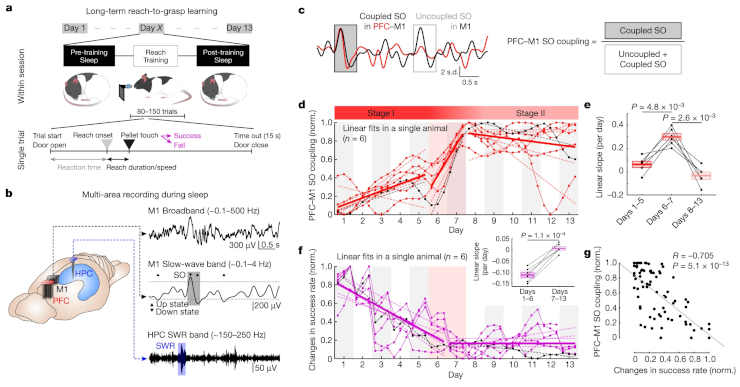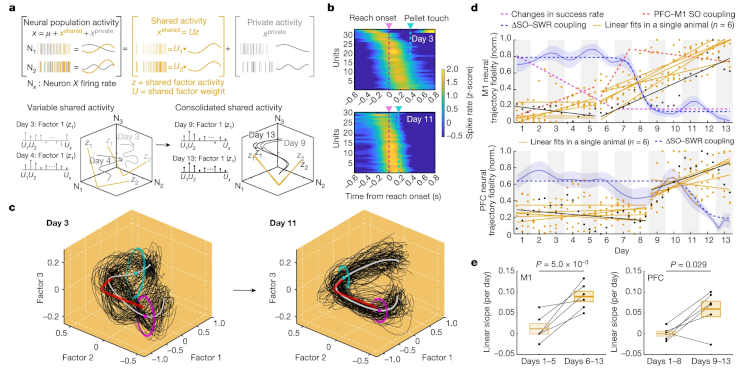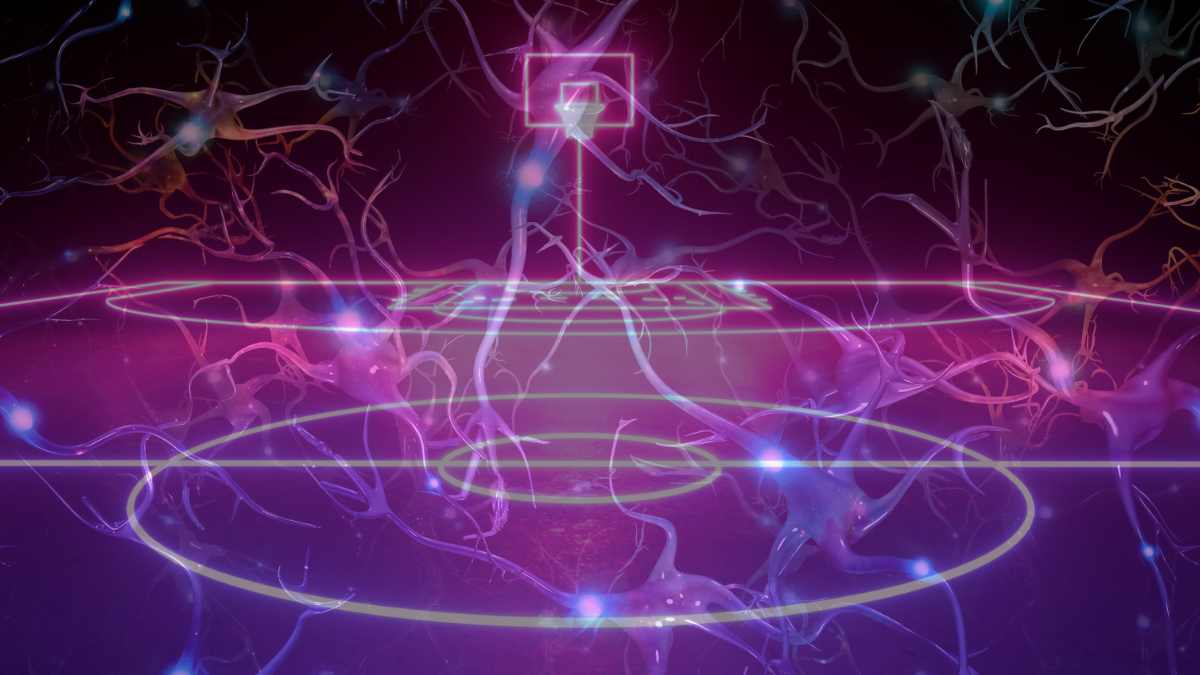Steph Curry of the Golden State Warriors basketball team uses his brain’s motor memory each time he makes a free throw. As the brain processes the day’s learning to make the physical act of doing something subconscious, University of California at San Francisco (UCSF) researchers have now demonstrated how this type of memory is consolidated during sleep.
According to the research, the brain does this by looking at how well an action worked and how well it didn’t work.
Using the same analogy, that entails going through all of Curry’s free throws and eliminating all memories of them other than the ones that were successful or that the brain deemed to be “good enough.” As a result, one can make free throws with a high degree of accuracy without having to focus on the necessary physical movements.
“Even elite athletes makes errors, and that’s what makes the game interesting. Motor memory isn’t about perfect performance. It’s about predictable errors and predictable successes. As long as the errors are stable from day to day, the brain says, ‘Let’s just lock this memory in,'”
said Karunesh Ganguly, MD, Ph.D., of the UCSF Weill Institute for Neurosciences.
Surprisingly Complex Communication

Credit: Kim, J., Joshi, A., Frank, L. et al CC-BY
Ganguly and his team discovered that the “locking in” process, which occurs during deep restorative sleep known as non-REM sleep, involves some surprisingly complex communication between various brain regions.
According to Ganguly, who previously identified the sleep-related brain waves that affect skill retention, sleep is crucial because our conscious minds tend to concentrate on our failures.
“During sleep, the brain is able to sift through all the instances it’s taken in and bring forward the patterns that were successful,”
he said.
Coupling Between Hippocampus, Prefrontal Cortex and M1
It was once believed that only the motor cortex was necessary for learning motor skills. In recent years, however, a more nuanced picture has emerged.
To investigate this process in greater detail, Ganguly had rats reach for pellets. The researchers then examined brain activity in three regions during NREM sleep: the hippocampus, which is responsible for memory and navigation, the motor cortex (M1), and the prefrontal cortex (PFC).
During the course of thirteen days, a pattern emerged.
Initially, in a process known as “fast learning,” the PFC coordinated with the hippocampus, presumably allowing the animal to perceive its motion in relation to the surrounding space and its location within that space. During this stage, the brain appeared to be analyzing and comparing all the actions and patterns developed during practice.
Slow Learning To Motor Memory
Second, during a process known as slow learning, the prefrontal cortex (PFC) appeared to make value judgments, likely prompted by reward centers that were activated when the task was completed successfully. It engaged in crosstalk with the motor cortex and the hippocampus, dampening failure-related signals and amplifying success-related ones.
Eventually, as the electrical activity of the regions became synchronized, the role of the hippocampus diminished, and the brain’s rewarding experiences came to the forefront, where they were stored in what we call “motor memory.”

(a), Schematic diagram showing shared and private activity of neural population activity using GPFA.
(b), Examples of PETH in M1 during reach period at days 3 and 11; locked to the reach onsets. Durations from reach onset to pellet touch were typically longer at the early compared with the late period of learning.
(c), Examples of neural trajectories (black) travelling on the shared activity space defined by the top three GPFA factors in M1. Grey curves, mean template. Red curves, ‘optimal’ neural trajectory for a successful task. Dots, mean reach onset (magenta) and pellet touch (cyan) times. Ellipses, 90% confidence area of covariance.
(d), Neural trajectory fidelity over learning in M1 (top) and PFC (bottom); each dot represents measurement in a tertile of single-session trials.
(e), Comparison of the slopes in d between two periods (two-sided paired t-test, n = 6 rats, P = 5.0 × 10−3 for M1, P = 0.029 for PFC). Transition period was determined by varying windows.
Credit: Kim, J., Joshi, A., Frank, L. et al CC-BY
The rats’ brain signals were chaotic and noisy as they first learned the task. Ganguly observed the signals synchronizing over time, and the rats eventually succeeded roughly 70% of the time.
After that, as long as the success rate remained stable, the brain appeared to ignore errors and preserve the motor memory. In other words, the brain stops updating the motor memory and begins to expect a certain level of error.
Environment Dependence
The rats, like NBA players, mastered a skill based on a mental model of how the world works that they developed through physical experience with gravity, space, and other cues. However, this type of motor learning would be difficult to transfer to a situation with different cues and physical environment.
“If all that changed, for example, if Steph Curry was in the world of ‘Avatar,’ he might not look as skilled initially,”
Ganguly said.
What if Curry sprained his finger and had to relearn how to shoot baskets? The research provided an answer.
“It’s possible to unlearn a task, but to do that, you have to stress the situation to a point where you’re making mistakes,”
Ganguly said.
Relearning Through Mistake Making
When the researchers made a slight change to the rats’ pellet procurement task, the rats would make more mistakes and the researchers saw more noise in the rats’ brain activity.
The change was minor enough that the rats did not need to go back to the beginning of their learning, but only to the “breaking point,” and relearn the task from there.
However, because motor memory is ingrained as a series of motions that follow each other in time, changing motor memory in a complex motion like free throwing a basketball may necessitate changing a motion that initiates the entire sequence, according to Ganguly.
For example, if Curry typically bounces a basketball twice before throwing it, it may be best to retrain the brain by bouncing it only once, twice, or three times. That way, you’d start from scratch.
Reference:
Kim, J., Joshi, A., Frank, L. et al. Cortical–hippocampal coupling during manifold exploration in motor cortex. Nature, 14 December 2022
